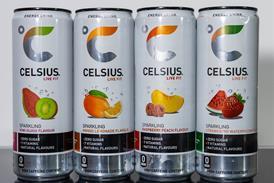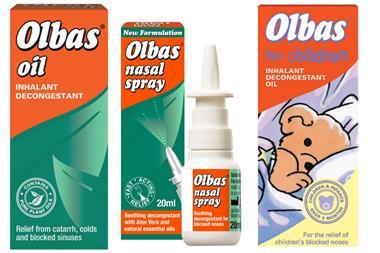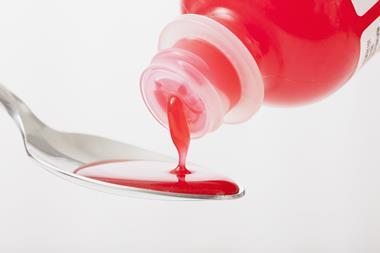C-store owners can play a big role in providing for under-threes, and retailers who can deliver could earn themselves customers for life
Parenthood is far from a walk in the park, as disrupted sleep, extra costs and a lack of time can test the mental strength of any new mum or dad. That’s why parents really appreciate stores that are on hand to offer them everything they need for their little ones, when they want it, creating big opportunities for independent retailers.
According to research from baby food manufacturer Organix, baby food is worth £11m in convenience and is growing at a rate of 11% year on year, against the multiples’ growth of 3% year on year.
What’s more, HIM Research & Consulting found that 29% of c-store shoppers live in a household with children, and one in 10 convenience shoppers has children under the age of five, making the preschool and baby care category a must for retailers.
Adam Vincent, store manager at Dike & Sons in Stalbridge, Dorset, says: “Helping parents in the local community to keep up with the growing demands of parenthood is something local retailers have been doing for years, and it remains a vital element of our business.”
Organix reports that young families are the fastest growing shopper segment in UK retail and the baby category has one of the highest shopper frequencies, with young families spending more than the average shopper across 71% of categories in-store, making them critical consumers for retailers.
Emmanuelle Grimbert, marketing director at Danone Nutricia Early Life Nutrition says the baby milk formula category is relatively stable, which is consistent with the current birth rate being level.
“Aptamil strengthened its position as the UK brand leader,” says Grimbert, “helped by the January 2016 launch of Aptamil Profutura, a new premium offering.”
Revamp for Heinz infant breakfasts
Kraft Heinz has introduced new-look packaging to its range of infant breakfasts as part of a rebrand.
The original bag-in-box combination has been replaced with a convenient tub and scoop alternative to make infant breakfast feeding less stressful and messy.
The packaging now comes with a new scoop measuring tool for portion control reassurance, while the re-sealable tub aims to lock in freshness and reduce wastage.
The infant breakfast range caters for ages four to 10 months, with each tub featuring a colour-coded lid for easy navigation to the correct age group. It is available in 10 flavours with no added sugar, and contains 12 key vitamins and minerals.
Heinz research discovered that parents were often switching infants to family alternative breakfast foods, which don’t always offer the same nutritional and textural requirements as the trusted Heinz infant range, but come at a cheaper price. With this in mind, Heinz has retained its current rrp for a new larger pack, which is in line with family cereal alternatives (rrp £2.99, 240g, and £1.99, 140g.)
The launch will be supported through digital media activity.
Heinz infant brand manager Meena Patel says: “Stackable tins with a larger on-shelf presence combined with increased pack size and additional marketing support make this range a must stock for all retailers.”
Cow & Gate remains in a strong second place. Grimbert adds that biscuits and cereal bars snacks are showing rapid growth, followed by fruit snacks and breadsticks. However, more traditional formats such as rusks have lost ground.
Of course, when it comes to feeding their offspring, young families are keen to give their children the best so health is a top priority. Some 97% of parents say health is a number one concern, according to Chris Braitch, Organix customer marketing controller: He explains: “We’re seeing increasing awareness among parents of healthy eating and the ingredients in the food they buy.” He claims many retailers are capitalising on healthy snacking for adults, but are neglecting the need for an accessible and balanced range for kids.
Adam Vincent is a new father himself and knows just how important it is for retailers to stock healthy food ranges. He says: “Our most popular products are the ones that contain real fruit and vitamins and are designed for maximum health capability, because parents love their children and want the best for them and won’t compromise. They also won’t compromise on cost either, with some of these products being quite expensive, such as two food sachets for £2.69. It can be hugely profitable to retailers.”
Bolton retailer Baz Jethwa owns two Costcutter stores in the Greater Manchester town and has also noticed a demand for high-quality products when it comes to kids. He says: “Some customers want the highest quality and premium-quality brands when it comes to baby food, which is why we stock those brands. Some of them are at a higher price point, which means sometimes if customers come in and buy quite a few items then it is quite a high value sale for us.”
However, retailers shouldn’t be neglecting the value end of the market. Braitch adds: “There is a clear consumer split between those looking to purchase more expensive premium multipacks (40% shoppers driving 55% category value) and those looking for smaller/cheaper pack formats (60% shoppers driving 45% category value). Having a balanced range that caters to both groups is critical.”
Baz agrees. “There are some customers who are cash conscious, because being a parent can be expensive and money can become tight, so it is important that we run promotions and make things affordable, too. We run a deal on big-brand baby food sachets at three for £4, which gives those customers choice for less.”
Non-food range
For Baz, non-food is the area where cash-conscious shoppers are most likely to seek out a bargain. “Those customers are probably more likely to buy unbranded products when it comes to wipes, nappies and lotions, because they are usually cheaper. But an area where parents are not likely to compromise is food and snacks.”
Adam adds that when it comes to nappies and wipes, his customers like to buy in bulk to make a saving and ensure they don’t run out.
Andrew Freestone, commercial director at SHS Sales and Marketing, says the non-food area is one retailers shouldn’t neglect. “Within the convenience channel baby wipes and baby toiletries are important categories for retailers in order to offer a broad range of products for busy parents. Baby wipes are worth £9.3m to the convenience channel, with baby toiletries adding another £2.3m to the channel, according to Kantar.”
Organix has identified range as a key determiner for the baby food category’s shoppers. “Research shows that 54% of mums shop in convenience stores every week, but only 9% shop the baby food category. This is because 46% of mums are not satisfied with the current range available within c-stores and 57% think the range is small with limited choices,” says Braitch.
Baz has two young children under two and concurs that range is important. He says: “As a parent and a retailer I can understand the pressures and how you can sometimes run out of items in the house. I noticed that the supermarkets only do big bulk packs when it comes to nappies and items like that, so I think c-stores that offer smaller pack sizes and top-up items can play a big part in helping parents out when they need to top up. It is important that we serve our community, and giving a helping hand to mums and dads is naturally a big part of that. Customers appreciate the convenience of our opening hours and availability at a short walk from their homes.”
It’s not only convenient opening hours that shoppers are looking for, but convenient products, points out Baz. “We stock a strong range of baby food sachets from brands such as Ella’s Kitchen and Hipp. These are popular because of the flexibility of the products. Sachets are great for parents because they can just tear off the top and heat them up, and can use them on the go, too.”
Saving parents time in store is another consideration for retailers and ensuring the section can be easily shopped is important. Organix recommends that retailers create a destination area for food for babies and toddlers, dedicating 25% of the space to food pouches, 27% to snacks, with the remaining 48% to fruit pots, jars, tray foods and others. It’s also important to show age/stage and vertainly provide a definition between baby and toddler within infant snacking.
Braitch points out that having a healthier snacks impulse area in the queue system, freestanding unit or front-of-store display is a great way to capture more premium shoppers and drive value.
Freestone at SHS Sales and Marketing emphasises the need for store owners to have good availability. “Shoppers will know which brand and product they want to buy before they come into the store. While they may switch to a different pack size if they cannot get the brand they are looking for, they are unlikely to transition to a lesser-trusted brand and could leave empty-handed. It is key for the category to stock familiar brands that shoppers trust.”
At Dike & Son’s the category is merchandised on a 2m bay and 2m wall bay. Andy explains that he likes to stock all the range together so parents can come in and find everything they need all in one go.
Adam adds: “We know that parents want the best for their children and are brand loyal when it comes to products. My wife will go elsewhere for baby milk if we don’t have the one that she wants, because parents don’t compromise. That is why we stock five different types of milk and lots of different brands.
“When parents run out of vital items at the most inconvenient hours, it means a lot to those customers that they can rely on their local c-store to have a fully-stocked range and to be open for them when needed. Although the category is profitable, it is also more than that; it is about giving a helping hand in the early stages of parenthood. That’s how you win over customers for life.
Over the counter medicines
It’s harder to think of a more distress purchase than a parent on the hunt for pain relief for a sick child, and retailers need to ensure they have a range of options available.
Andrew Freestone, commercial director at SHS Sales and Marketing, says: “Infant pain relief is important for when distressed parents need instant relief for their children. It is worth £84m at a total market level.
“Calpol is the leading brand within infant pain relief with 64% of all sales in the sector coming from the brand.”
He points out that not every product within the range is suitable for all children and some parents require different dispense methods, so it is important for retailers to stock a good range.
He adds: “Child pain relief should be merchandised within the medicines fixture as this is where shoppers would naturally look for it. If there is room on a baby care fixture for a secondary siting of child pain relief/medicines, then it would be of benefit to set up a second display on this fixture.”
New to the convenience channel is Benylin Infant, rrp £3.72, bringing the confidence of a well-known and trusted brand to small stores. Adds Freestone: “Benylin Infant apple flavour is the newest addition to the range and gives parents the confidence in a brand they have used to soothe their own symptoms when selecting a product to use with their families.”































No comments yet